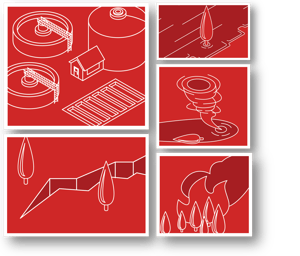Communities depend heavily on their wastewater systems, so ensuring this resource is strong enough to withstand a natural or human-caused disaster is crucial. Building up system resiliency so it can bounce back from any harm protects against a range of health and safety risks, keeping your sewer system in better shape for longer.
 Some of the most common challenges wastewater utilities face include aging infrastructure, increased inflow and infiltration, severe weather events, power outages, and urban growth, among others.
Some of the most common challenges wastewater utilities face include aging infrastructure, increased inflow and infiltration, severe weather events, power outages, and urban growth, among others.
To combat these issues, utilities should have a thorough plan in place for managing the risk and resiliency of their systems. Accurate and consistent data collection is a key part of building an effective plan.
Data analytics and technology can help determine risk, convince communities and regulators of the importance of wastewater resiliency, and improve operations as a whole.
Moreover, sewer data is instrumental in getting fallen systems back online quickly and developing a triage plan to tackle damage. This data can be used to develop criticality scores, helping wastewater departments address repairs in order of their impact on the community. It can also be used to establish a risk assessment curve to help responders make tough decisions in crisis situations and predict future problems, such as weak spots that may be exposed as infrastructure expands and demand changes.
Building system resiliency requires time and support from team members, but it can and should be a part of every wastewater department’s overarching strategy. To begin developing a plan for resiliency, there are a number of resources to be used as guides along the way.
Download WinCan’s free white paper, Building a Case For Water and Wastewater Resiliency, to learn more about these resources and the importance of a plan:





